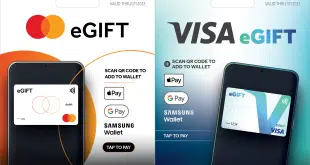I have had the privilege to present the vision of tethered digital money both to the Federal Reserve and to the Peoples’ Bank of China, the PBOC. My business was good in both countries, but the response was vastly different.
In the United States, the financial leadership became exceedingly anxious and defensive about Bitcoin. They obsessed over the threat from digital money to bypass the central banks. Here comes a currency that is minted without a fixed mint, is traded without central oversight, and is passed anonymously across national borders. It was panic time. I was brought on to speak to bank examiners about the existential risk of Bitcoin and its many variants.
By contrast, in China there was no fear regarding unruly citizens trading en masse in digital currency contrary to government orders. So Chinese bankers looked deeper, beyond the decentralization of money.
Granted, the decentralized nature of Bitcoin is a fundamental aspect, but it does not work for the global economy. The fact that Bitcoin’s value is floating unhinged to any commodity of value is also very fundamental, but not in a good way. The use of blockchain is indeed critical, but the blockchain-generated trust can be generated by other means. The key to the Bitcoin revolution lies in its ability to elevate a number into an entity, a value into an identity, a measure into a treasure.
Money was digital before Bitcoin but only as a number, with no identity value. One Bitcoin is distinguished from all other Bitcoins to the same degree that one dollar bill is distinguished from another dollar bill. In other words, while a Bitcoin is merely a string of bits, it is more than a number, it is an identity bearing a value. This is the widely underestimated revolution in the concept of money.
This notion of monetary cyber identity is why, arguably, digital money stands to become the biggest story of the first half of the 21st century. Bitcoin was not the first to identify this revolution (the BitMint patent claiming identity-bearing money was filed six months before Satoshi Nakamoto published his paper on Bitcoin), but Bitcoin is nonetheless intellectually fascinating. And for criminals, it is irresistible.
The PBOC realized that Bitcoin-like money in the sense of being tetherable is different from the prevailing money as a guided missile is different from a cannon ball. Both the missile and the tethered money can be guided by the originator after the payload is unleashed. Tethered money, as I argue in my book, Tethered Money, becomes a ground-breaking tool for social impact and political control.
Characteristically, the PBOC surveyed everything it could find in the West. That is how BitMint found itself invited to China, and eventually had its digital coin implemented by the Bank of Shanghai. While the Federal Reserve defended its legacy, the PBOC extended its legacy. China is now testing its digital coin, ready to offer frictionless, fine-tuned payment to nations and corporations.
The Internet lingered for almost two decades before America took the lead and ruled the world with the TCP/IP protocol. Had China been as awake then as it is today with digital money, the Internet, and the world, would have been quite different.
The ominous prospect of Nazi Germany building an atomic bomb triggered the Manhattan Project, where the goal was clearly stated before there was any sense of how to achieve it, or even of whether it was achievable. A digital-currency Manhattan Project is the call of the hour. America should be ready with a cyber financial framework to defend its global financial leadership.
—Gideon Samid, gideon@bitmint.com





